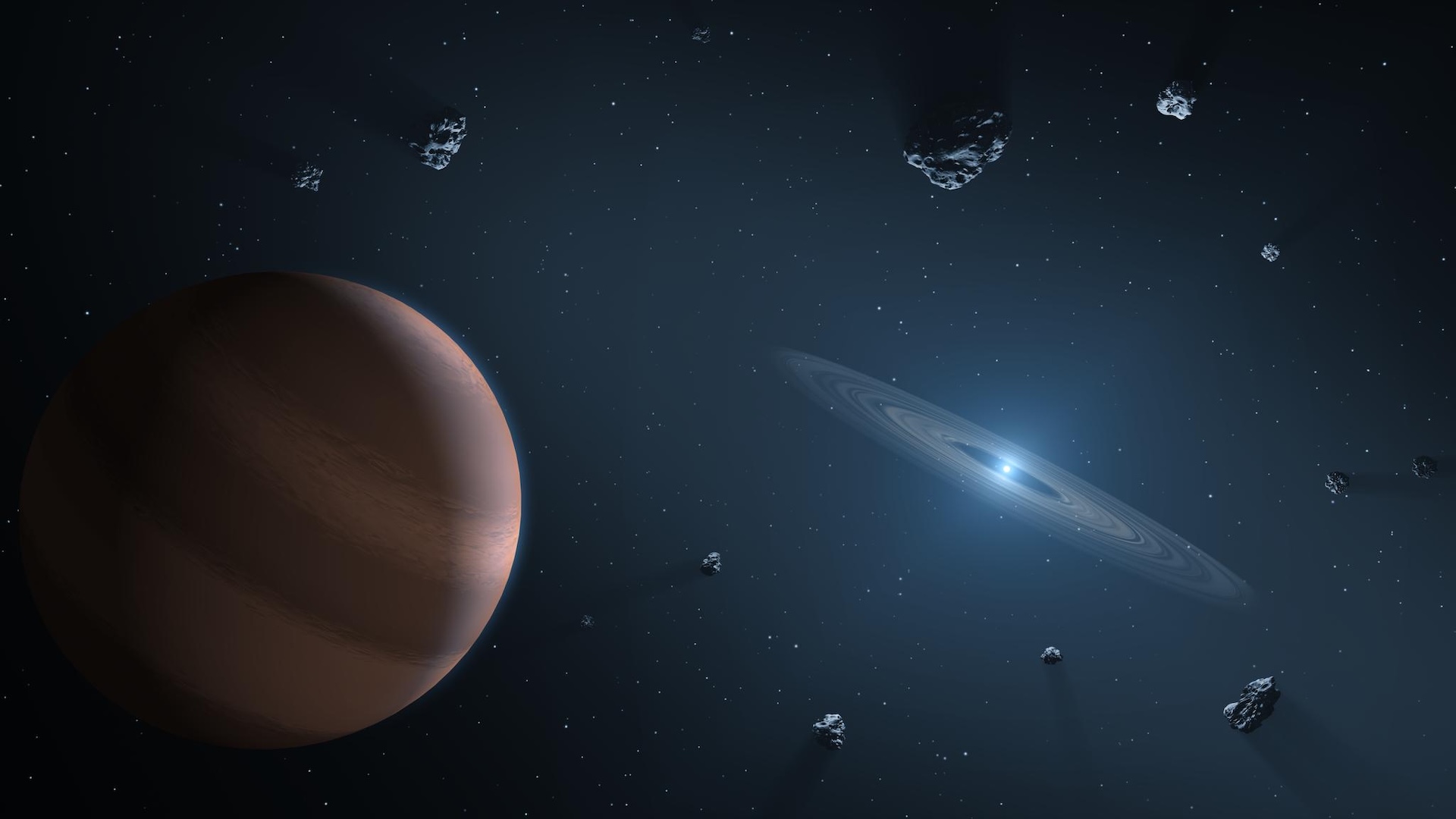Planets orbiting white dwarf stars, though promising candidates for long-term alien habitability, confront a critical and potentially fatal overheating issue. Intriguingly, new research suggests that the unexpected solution to this planetary predicament may lie within the groundbreaking theories of Albert Einstein.
White dwarfs are the dense, compact remnants of sun-like stars that have reached the end of their stellar lives. Hundreds of millions of these cosmic husks populate our Milky Way galaxy alone. Their remarkable capacity to remain warm for an astonishing hundreds of billions of years positions them as particularly compelling targets in the ongoing search for extraterrestrial life.
Previous research has indicated significant hurdles for life to flourish on planets orbiting white dwarf stars. The habitable zone—the region where surface temperatures could support liquid water—around these stellar remnants is remarkably narrow, extending only from one-tenth to one-hundredth the distance between Earth and the sun. While this extreme proximity might be survivable for an isolated world, the primary challenge emerges when such a planet exists within a more complex system.
The gravitational pull from another substantial planetary body in proximity could force an inner planet into a profoundly elliptical orbit. This extreme trajectory would then subject the world to intense tidal heating, causing it to stretch and squeeze internally. While similar forces are known to liquefy the subterranean oceans of icy moons in our outer solar system, for a planet orbiting a white dwarf, this identical mechanism would generate such overwhelming internal heat, rendering the world entirely uninhabitable.
Earlier studies had demonstrated the surprising ease with which a planet’s orbit could become unstable. Researchers found that even a minor departure from a perfectly circular path was sufficient to seal the celestial body’s fate.
Previous gravitational research primarily relied on Newtonian gravity, a fundamental model effective in explaining everything from terrestrial projectile motion to the orbits of most planets. However, this classical framework proves inaccurate under certain conditions, particularly for close-in orbits around dense stars. A notable instance of this deficiency is Mercury’s slow orbital precession around the sun, a phenomenon Newtonian gravity cannot account for. A landmark achievement of Einstein’s theory of general relativity, which reconceptualizes gravity as the curvature of spacetime, was its precise explanation of Mercury’s orbital anomaly.
A recent paper, published on September 30 in the preprint database arXiv, presents a more rigorous analysis of planets orbiting white dwarf stars. Researchers behind the study meticulously incorporated the complex effects of general relativity into their calculations. While the superior accuracy of general relativity was previously known, its challenging application and typically minor impact on standard planetary orbit computations often led prior analyses to forgo its inclusion.
New research, employing a more precise analytical approach, suggests a significantly broader window of habitability than previously estimated. Scientists explain that this expanded potential stems from the inner planet’s orbital precession, which effectively safeguards it from gravitational forces that would otherwise distort its path into a highly elliptical orbit. This crucial stability, in turn, prevents the onset of runaway tidal heating. These findings are currently awaiting peer review.
Tidal heating emerges as an unavoidable phenomenon in specific planetary systems, particularly when a companion body is either excessively massive or orbits in dangerously close proximity. However, across a vast array of other celestial configurations, an inner planet successfully maintains its orbital stability without significant disruption.
Should an extraterrestrial civilization arise on such a planet, its inhabitants might independently arrive at the theory of general relativity. Such a discovery would, in essence, be an acknowledgment of the fundamental physics that profoundly shaped their world’s conditions and, ultimately, enabled their very existence.







